Proper warm up exercises are essential for preparing for your workout. They play a pivotal role in enhancing performance and preventing injuries, a fact I emphasize to all my clients, regardless of their fitness levels.
Up next, a detailed rundown of warm-up exercises tailored for optimum results.
Let’s go!
#3 Dynamic Warmup vs Static Stretching (and why not to before workout)
Disclaimer:
Before beginning any exercise regimen, it’s recommended to consult with a healthcare professional or fitness expert. This list of exercises is provided for informational purposes only and is not intended as medical advice. Engage in these exercises at your own risk and always listen to your body to avoid potential injury. If you experience pain or discomfort, stop immediately and seek professional guidance.
#1 Warm Up Exercises

1. Jumping Jacks
Stand straight. Jump out, spreading your feet and raising your hands above your head, then jump back to the start position.
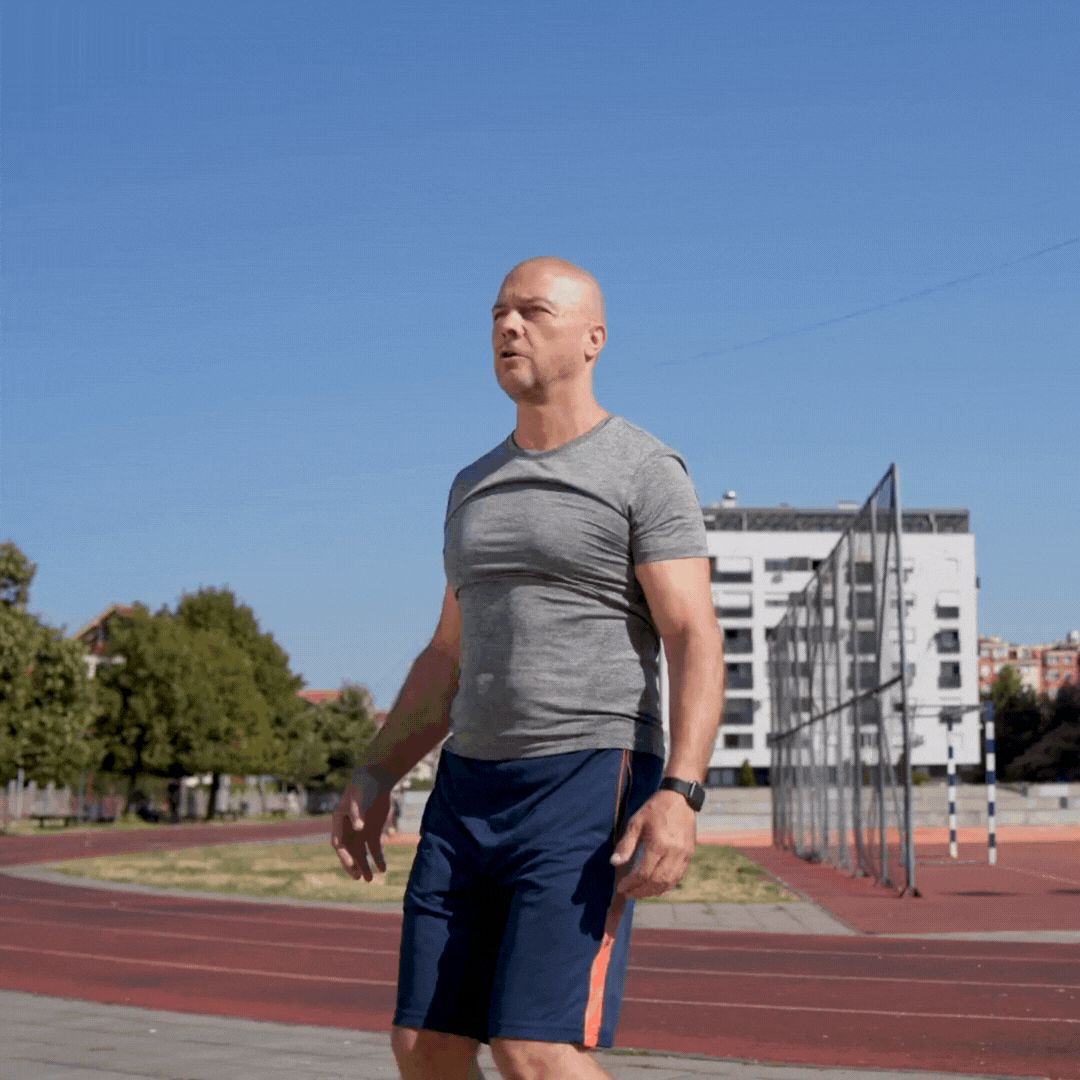
2. Arm Circles
Stand with your feet shoulder-width apart. Extend your arms out to the sides and rotate them in small circles, gradually making the circles bigger.
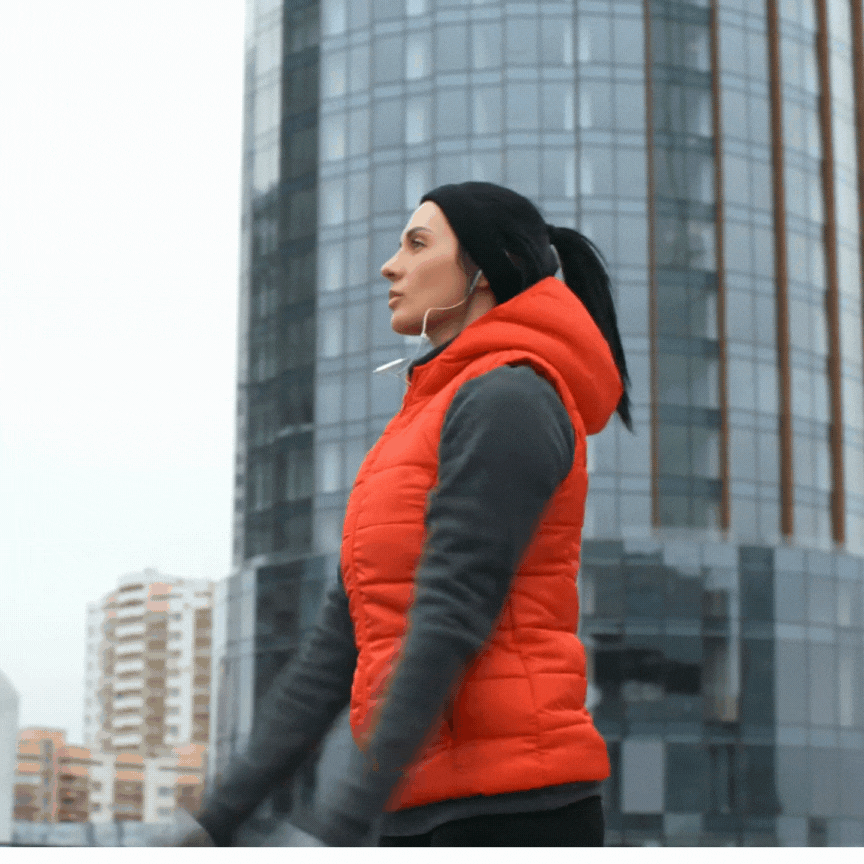
3. High Knees
Stand tall. Jog in place, lifting your knees high towards your chest.

4. Overhead Tricep Stretch
Raise one arm overhead and bend it at the elbow, reaching the hand down towards the opposite shoulder blade. With your other hand, gently press on the bent elbow to deepen the stretch along the tricep and the back of the arm. This movement targets the triceps.
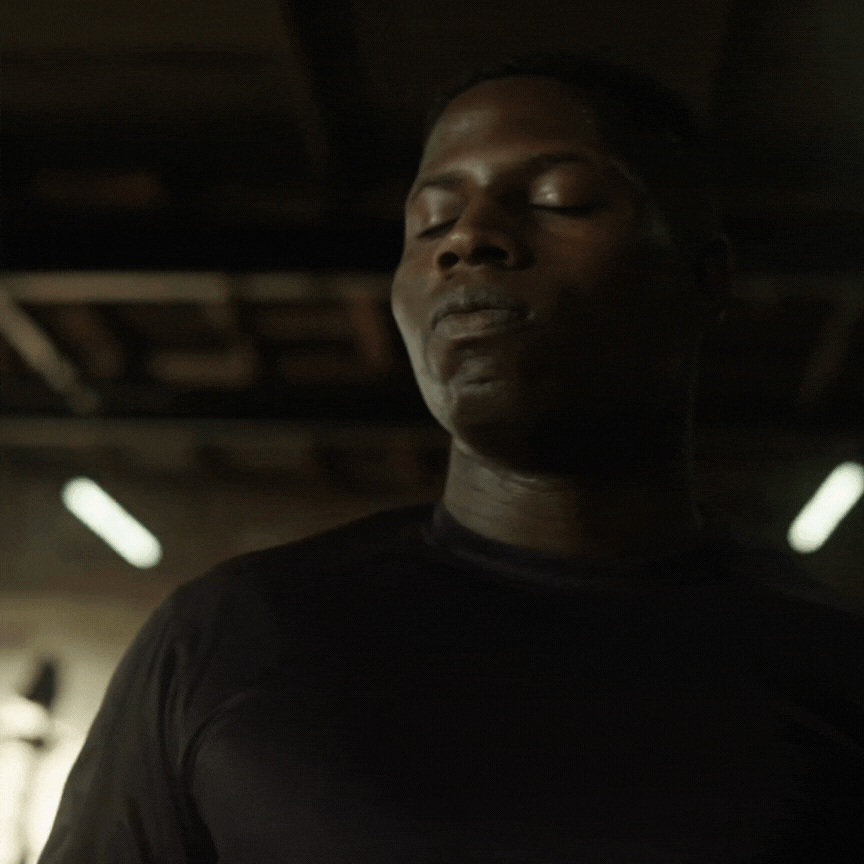
5. Quad Stretch
Stand upright and bend one knee, bringing your heel to your buttocks. Grasp the ankle and gently pull for a deeper stretch in the thigh’s front. Use a wall for balance if needed.
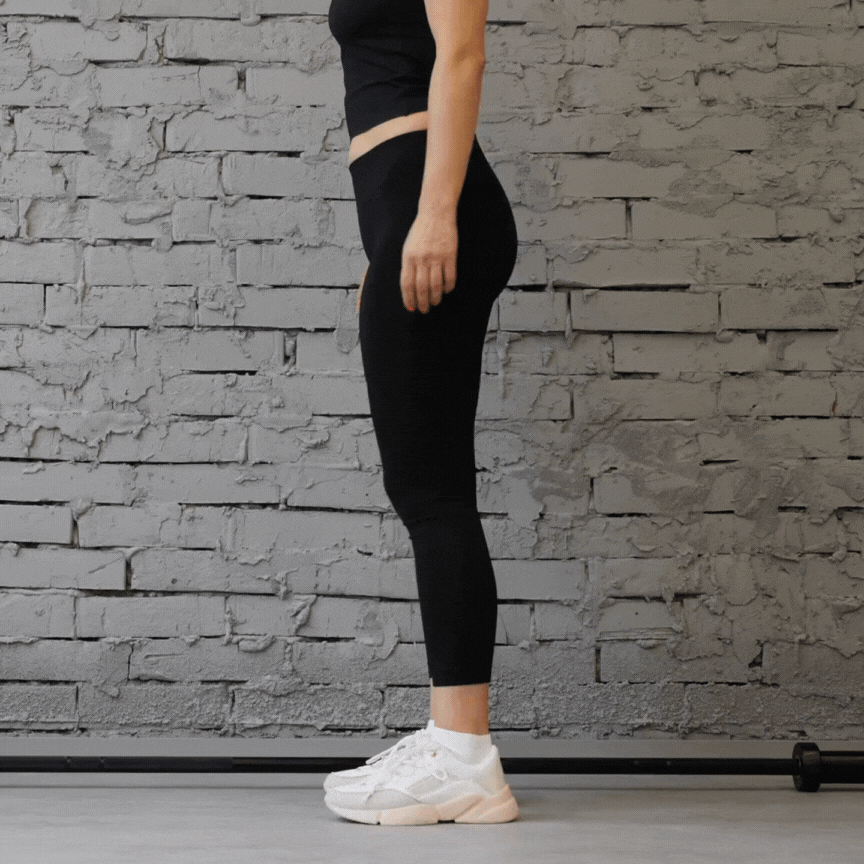
6. Leg Swings
Hold onto something sturdy for balance. Swing one leg forward and then backward in a smooth motion. Repeat with the other leg.
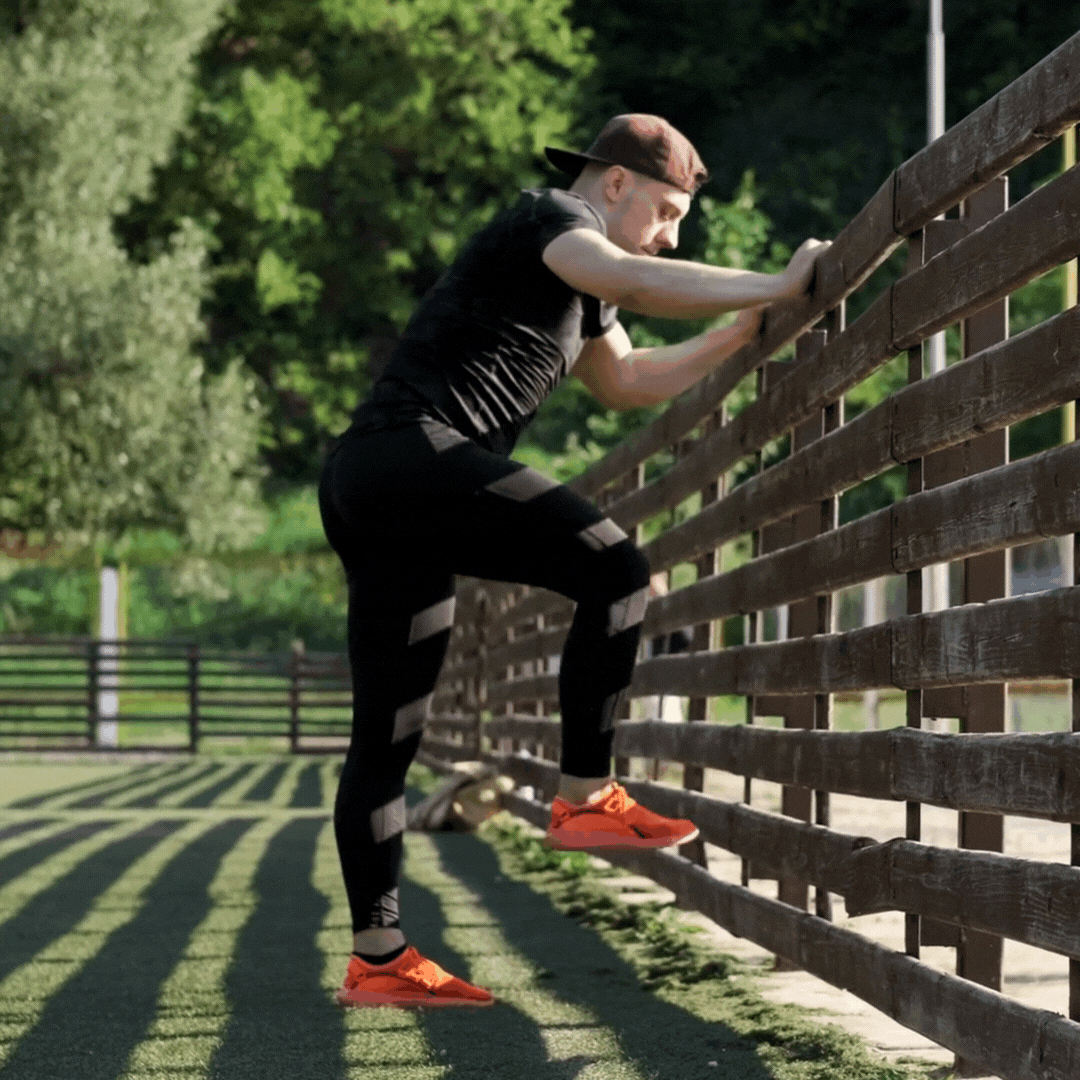
7. Hip Thrust
Begin by lying flat on your back on the ground, knees bent and feet flat. Push through your heels, lifting your hips off the ground until your body forms a straight line from shoulders to knees. Squeeze your glutes at the top, then slowly lower your hips back down. This movement activates the glutes and hamstrings, preparing them for more intense exercises.
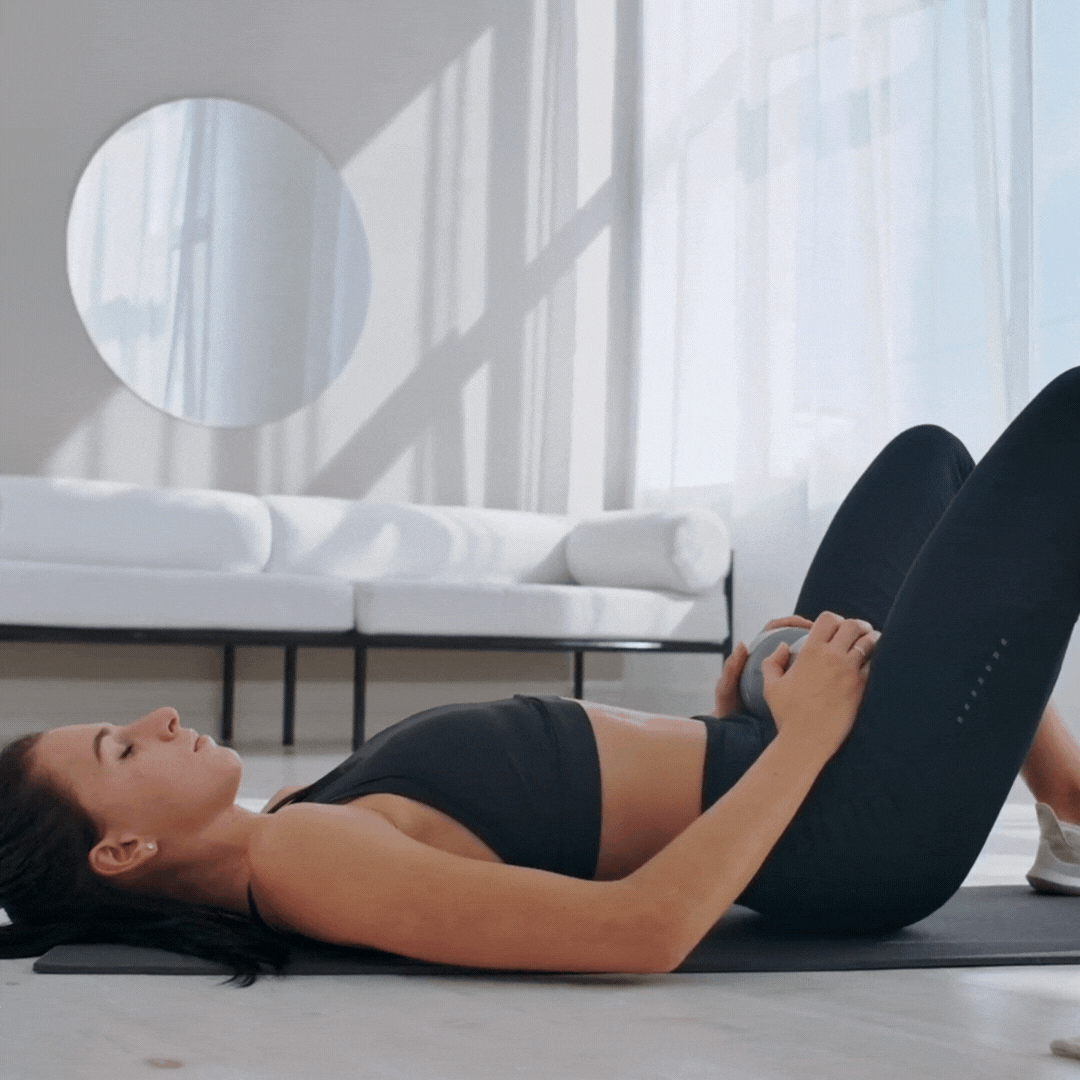
8. Walking Lunges
Start standing. Take a step forward, bending both knees to lower into a lunge. Push off the front foot to stand and step forward with the other foot.

9. Superman’s
Lie face down with arms extended forward. Engage your core, lifting arms, chest, and legs off the ground. Hold briefly, then return to start. This warms up the back, glutes, and shoulders.
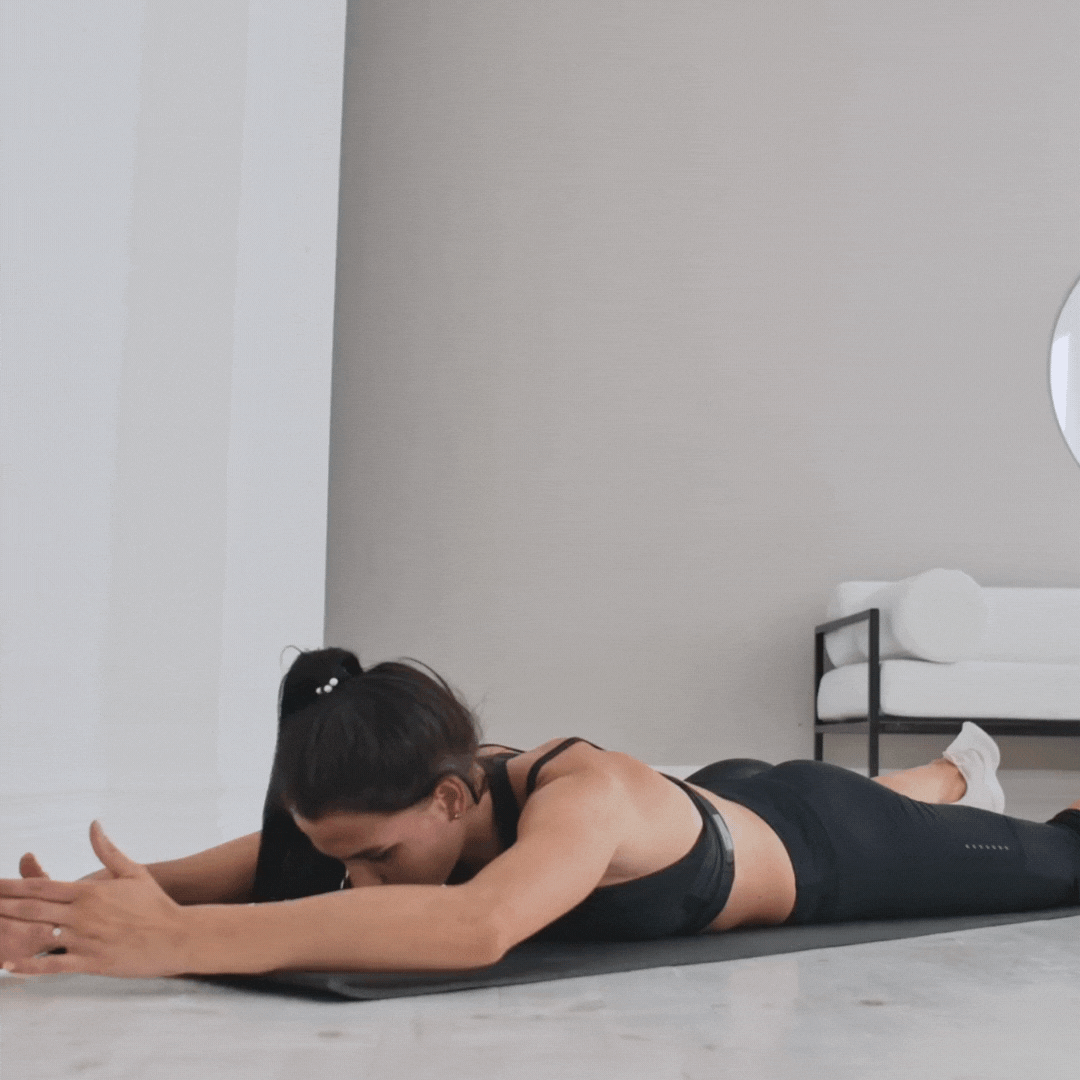
10. Squats
Stand with feet hip-width apart. Bend your knees and push your hips back, lowering as if you’re sitting in a chair. Stand back up and repeat.
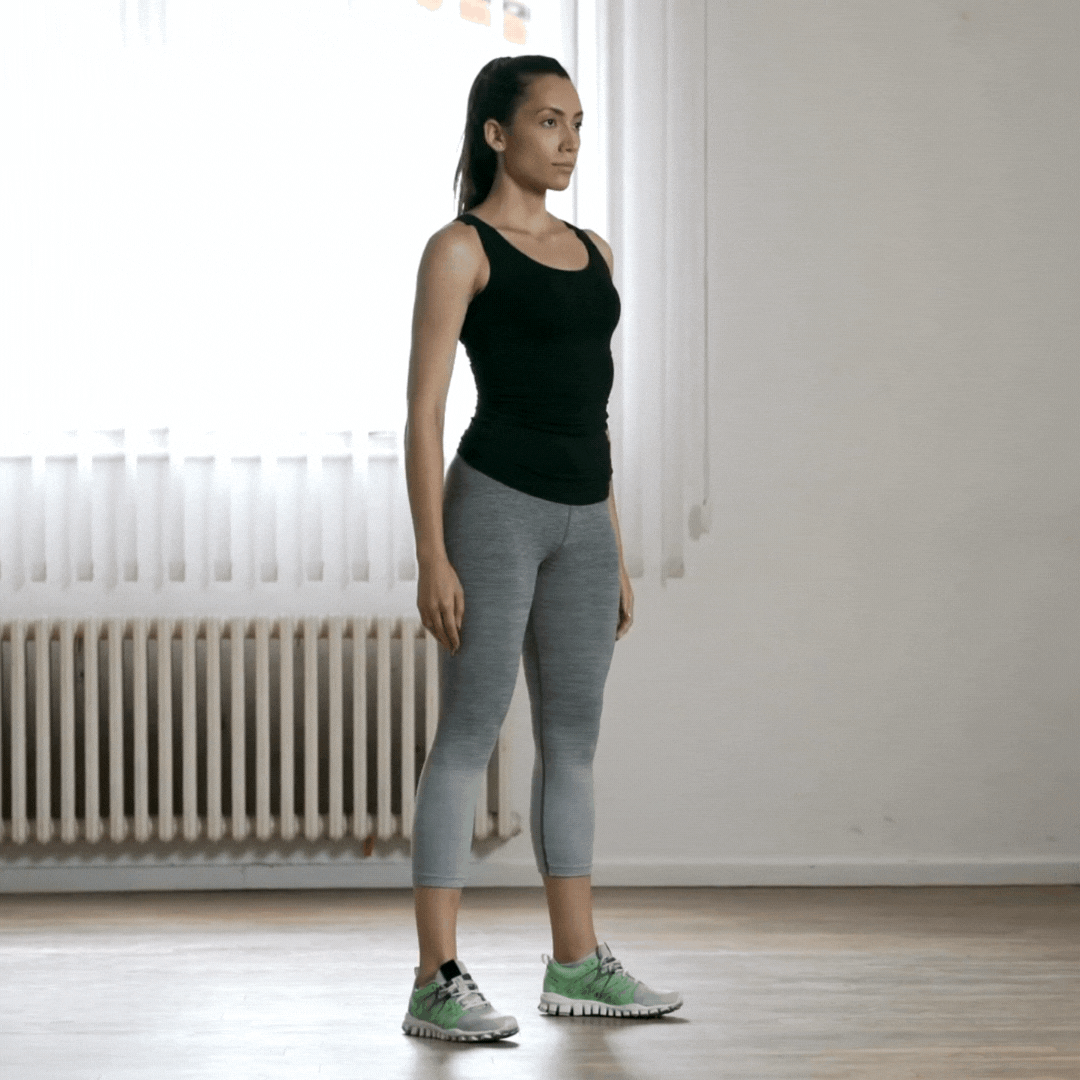
11. Shoulder Taps
Begin in a plank position. Tap your left shoulder with your right hand, then switch to tap your right shoulder with your left hand. Keep your core tight.
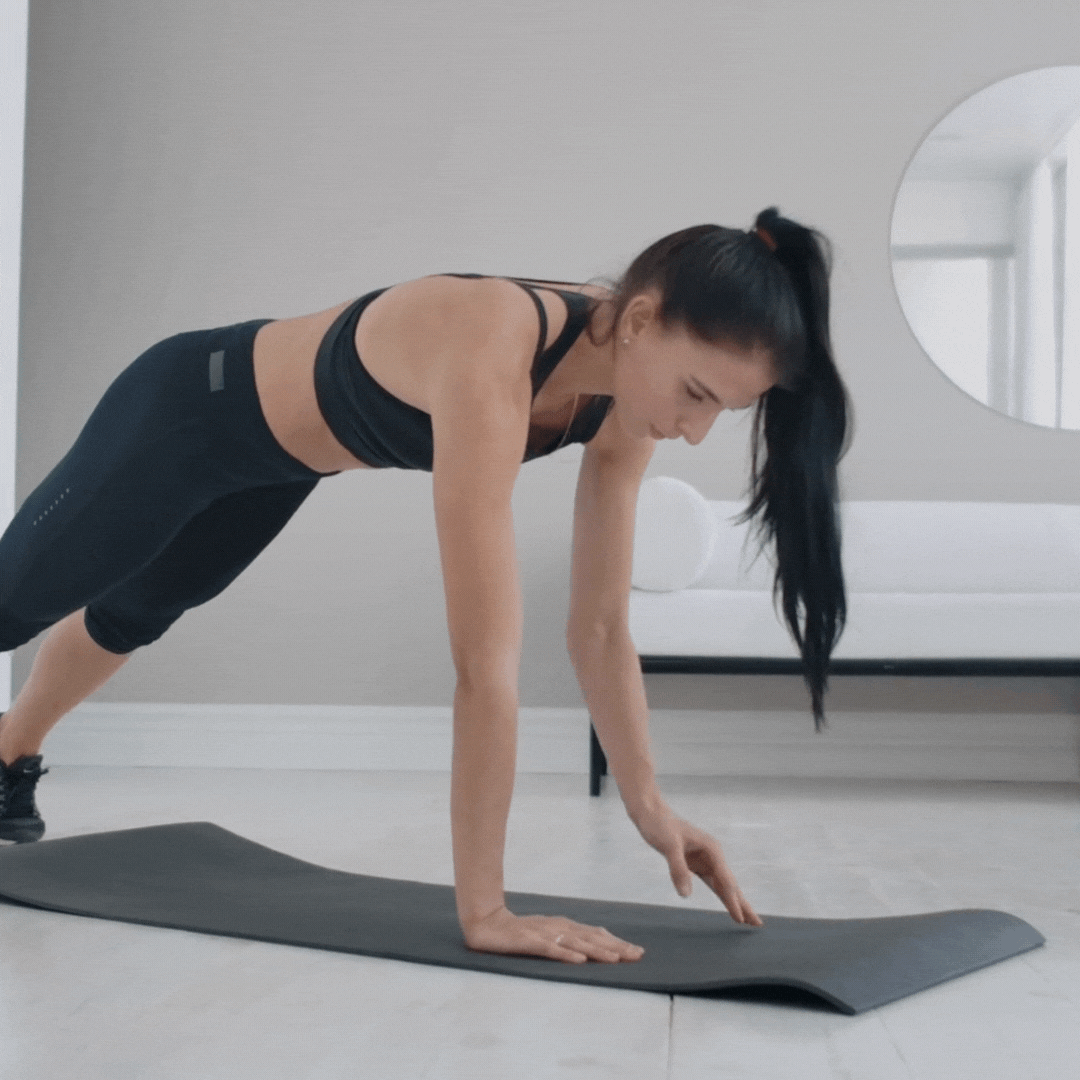
12. Hip Hinges
Stand tall with feet hip-width apart. Keeping a slight bend in the knees, hinge forward from the hips, keeping your back straight. Return to standing.

13. Push-up
Begin in a plank position, hands beneath your shoulders. Lower your body towards the ground, bending at the elbows, then push back up to the start.

14. Cat-cow
Start in a tabletop position on hands and knees. During the “Cat” phase, exhale and arch your spine upwards while tucking your chin. For the “Cow” phase, inhale and dip your belly downwards, lifting your head and tailbone. This flowing movement helps warm up the spine and core.
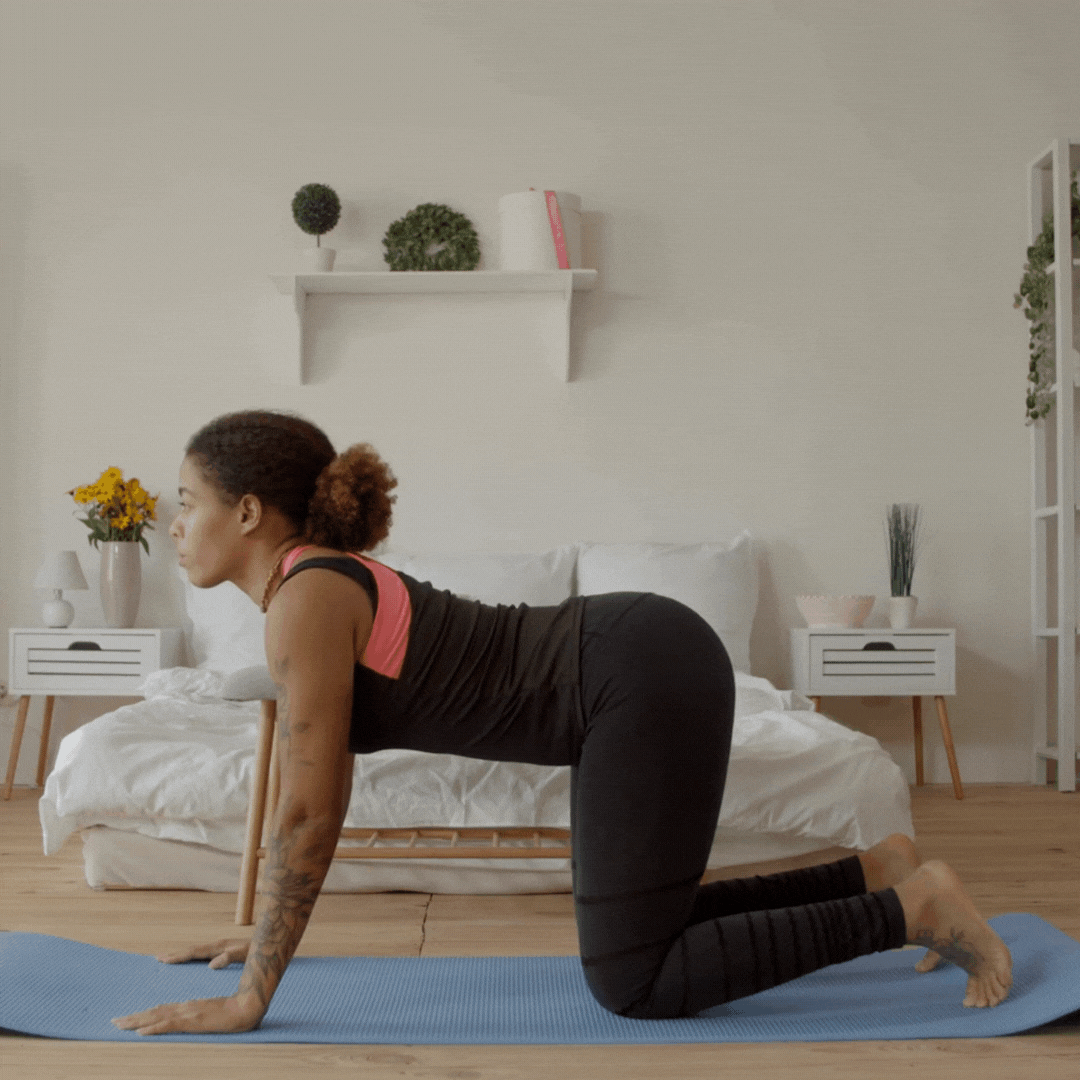
15. Bird-dog
Start in a tabletop position on hands and knees. Extend one arm forward and the opposite leg back simultaneously, keeping them parallel to the floor. Hold briefly, then return to the starting position and repeat with the opposite arm and leg. This exercise enhances balance, stability, and engages the core.
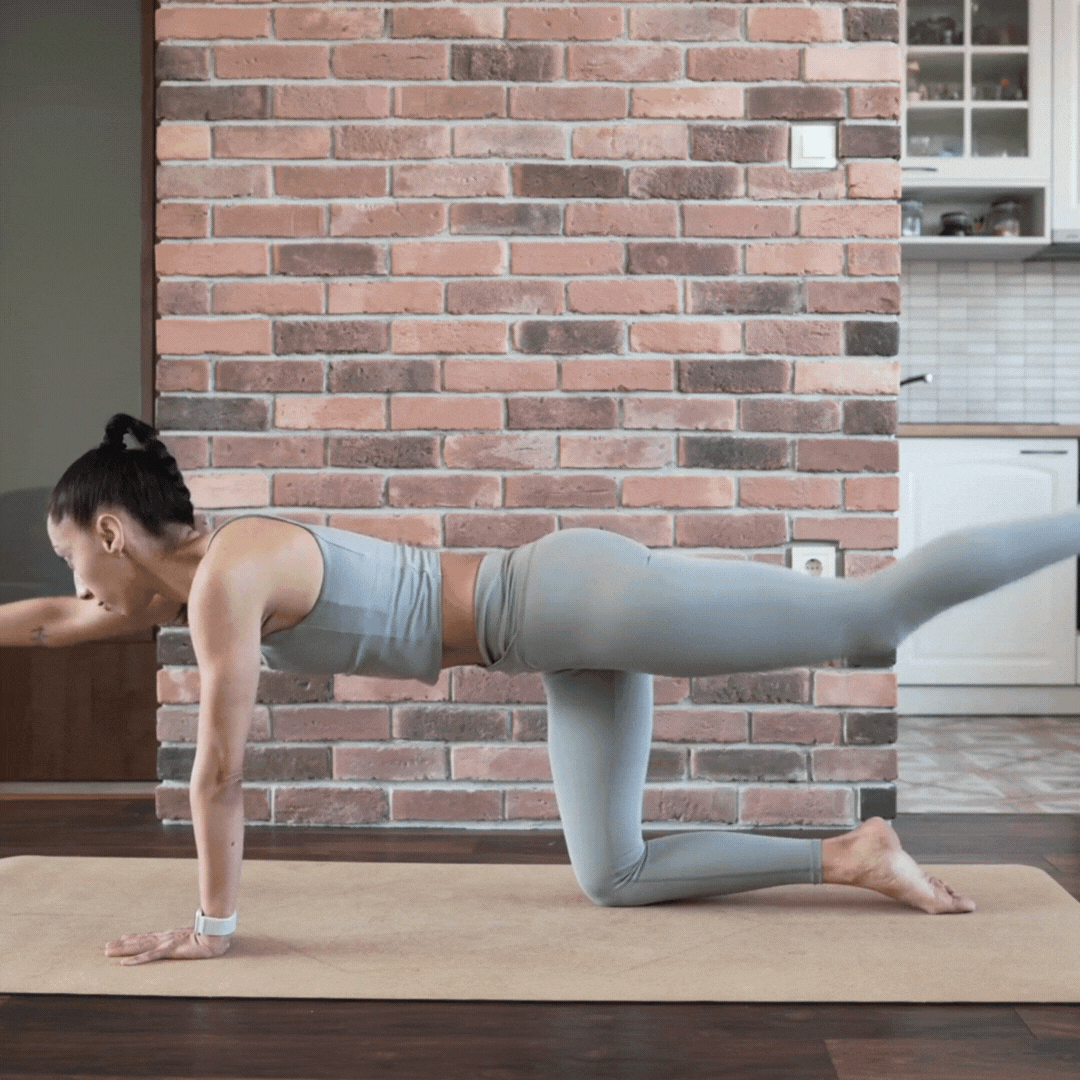
#2 Benefits of Warming Up
Initiating a warm-up routine helps the blood flow to your muscles and prepares them for more intense activity. Research from the National Library of Medicine indicates that proper warm-ups optimize muscle oxygenation, facilitating efficient exercise performance. Another point worth mentioning is from the American Heart Association. A proper warm-up is essential for efficient oxygen delivery to the muscles. Warm-ups facilitate the dilation of blood vessels which means that muscles will receive ample oxygen, enhancing their flexibility and performance.
Warming up is a necessary preparation. It’s beneficial for both the body and heart. Dr. Johnny Lee, a notable cardiologist, underscores the importance of warm-ups like low-heart rate cardio. These activities condition the circulatory and respiratory systems for the impending workout, optimizing heart function throughout.
There are differing opinions if warming up really does lower your chances of injury. A short conclusion from a study shared by the National Library of Medicine mentions that “However, the weight of evidence is in favour of a decreased risk of injury.” I personally support warming up beforehand as the benefits of warming outweigh any cons.
Research from the Journal of Strength and Conditioning Research highlights the positive impact of warm-ups on performance across various sports. From aerobic activities like cycling to skill-based ones like vertical jumping, properly tailored warm-ups can elevate performance. It’s crucial to align the warm-up method with the specific activity for best results. However, some unsuited warm-ups can even decrease performance, underscoring the need for appropriate selection.
Starting with a warm-up is also a mental primer. It gives you a moment to concentrate on your workout ahead, set goals, and mentally prepare. As highlighted in an article from the Journal of Educational Issues, warm-ups are not just about physical readiness but also play an integral role in preparing mentally for any performance. A well-structured warm-up helps an athlete’s mental focus. This allows performers to mentally align with their tasks and ready for peak execution.
Warming up can help balance and coordination. An article from the National Library of Medicine highlights the importance of warm-up exercises in enhancing postural control and dynamic balance. Warm-ups like stretching, treadmill walking, and plyometric training, boost muscle flexibility and adaptability. Also, plyometric training improves body equilibrium and coordination.
#3 Dynamic Warmup vs Static Stretching (and why not to before workout)

Dynamic Warm Ups
Dynamic warmups involve active, functional movements that prepare the body for the physical demands of the main workout. Typically lasting between 5 to 10 minutes, these movements—such as leg swings, arm circles, or lunges—increase heart rate, elevate muscle temperature, and enhance joint flexibility. For example, prior to a run, incorporating exercises like high knees or butt kicks can facilitate a safer and more efficient performance.
Static Stretching
Static stretching involves extending a muscle to its full length and maintaining that position for a duration, typically 15-60 seconds.
While it is beneficial for increasing flexibility, performing static stretches before an activity can temporarily reduce muscle strength and power. An analogy would be over-extending an elastic band before expecting it to function optimally. Thus, it’s generally advised to integrate static stretches post-workout to aid muscle relaxation and recovery.
#4 Warm Up Reps (CNS System)
Warm-up reps in resistance training are for muscle preparation and especially priming the central nervous system (CNS). These reps enhance communication between the brain and muscles, refining the motor patterns for specific exercises. By performing lighter reps before the main workout, the CNS becomes more efficient, ensuring a better and safer workout during heavier exercises.
Here’s an example:
Before attempting a heavy set of barbell squats, start with bodyweight squats. Then move to barbell squats only using the bar. Then slowly increase weight until you get to your working set.
#5 Tuning To Your Body

When warming up before a workout, it’s essential to really listen to your body. Notice how your muscles and joints respond as you start your warm up exercises. If you sense any tightness or discomfort, it’s a cue to adjust your warm-up accordingly. This personal connection to how you feel helps prevent injuries and also sets the stage for your best performance.
